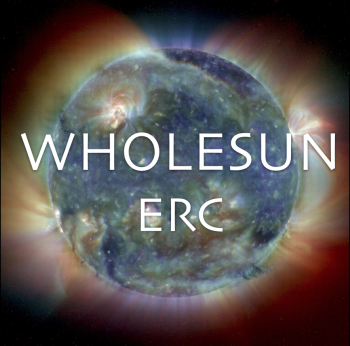Understanding the physical mechanisms underlying the eruptive activity of the Sun and its stellar twins
We live around an active magnetic star, our Sun, which by its variability and eruptive behaviour can significantly affect our technological society. Despite decades of intensive research, the fundamental questions of how the Sun works, the existence of a dynamic warm atmosphere, the explanation of its magnetic activity and the production of dark spots are still widely discussed.
Until now, research in solar physics focused separately on studying the structure and dynamics of the Sun's interior on the one hand or its surface and atmosphere on the other. The objective here is to link the studies of these two major solar regions in a coherent way, thanks to strong synergies between the project members. The aim will be to determine the origin of the magnetic field as well as the cyclic production of surface spots and eruptive periods in the upper atmosphere.
The WHOLESUN project is funded for a period of six years by a Synergy grant from the European Research Council (ERC). Four European experts on the Sun and stars, from the Astrophysics Department of the CEA-Irfu / UMR AIM, the Max Planck Institute for Solar System Research (MPS) in Germany, the University of St Andrews in the United Kingdom and the University of Oslo in Norway, will pool their know-how and knowledge of the dynamics of our star and its twin stars. A complete model of the Sun will be developed using the most powerful super computers, known as Exa-scale. This model will be constrained by observations from space missions, such as the European Space Agency's (ESA) Solar Orbiter, which will be launched in 2020.
• Structure and evolution of the Universe › Planets, star's formation and dynamics, interstellar medium Thèmes de recherche du Service d'astrophysique › Modélisation-SAp Modelisation, calculation and data analysis
• Institute of Research into the Fundamental Laws of the Universe • Department of Astrophysics (DAp) // UMR AIM
• Laboratory Dynamics of Stars, Exoplanets and their Environment



